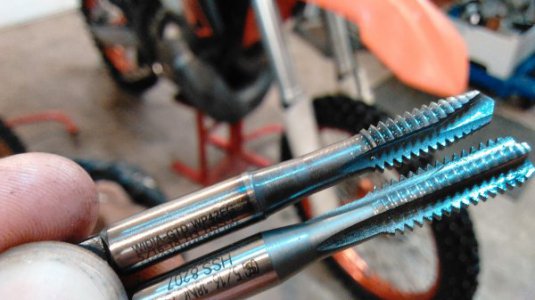- Joined
- Jun 20, 2016
- Messages
- 346
Up til now i've drilled my holes (axis's locked) , removed the drill , replaced that with a tap guide and hand tapped with the machine holding some downward pressure ... recently I made a 3/4" alum plate to hold flat parts horizontal... kind of a mini pallet thing, it had alot of holes that I had to tap by hand. I saw Tom Liptons power tapping video and tried a few bumping the Fwd/Rev . The tap was very prone to spinning free and I didn't really want to honk down too hard with the chuck to stop it. Short of buying an expensive tapmatic tapping head, what do I need to hold the tap for tapping using the mill ? Or do I just tighten the chuck more ? Seems like i'd damage the drill chuck jaws with the tap letting loose frequently . Yep it's a noob question but it's my first year owning a mill , any help appreciated ...response or link .
Thanks much , and everyone have a great New Year !
~Steve
Thanks much , and everyone have a great New Year !
~Steve

